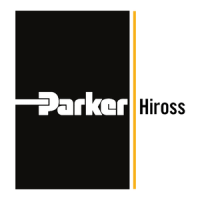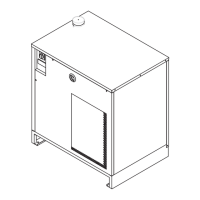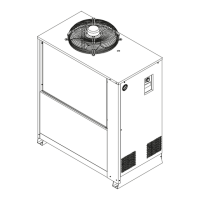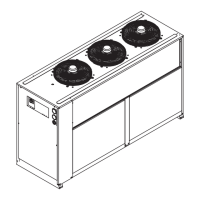Do you have a question about the Parker Hiross Hyperchill ICE076 and is the answer not in the manual?
Guidance on the importance and use of the user manual.
Explanation of warning signals and symbols used in the manual.
General safety precautions and guidelines for operating the unit.
Identifies risks not eliminated in the design stage and necessary precautions.
Instructions for transporting the unit, ensuring upright position and protection.
Guidelines for safely lifting and moving the unit using appropriate equipment.
Procedures for checking the unit's condition upon receipt and reporting damage.
Recommendations for storing the unit in a protected, dry environment.
Ensuring adequate space around the unit for airflow and servicing.
Details on different unit versions, including air-cooled and centrifugal.
Instructions for connecting and filling the water circuit, including filters and safety valves.
Requirements and checks for electrical connections, including power supply and safety.
Specific installation requirements for centrifugal fan versions, including ducting.
Installation details for water-cooled units, focusing on condenser water circuits.
Overview of the control panel layout, buttons, and indicator LEDs.
Step-by-step instructions for powering on and starting the chiller.
Procedure for safely turning off the chiller unit.
Details on accessing and managing various operational parameters and settings.
Procedure for setting the desired operating temperature of the chiller.
Procedure for configuring the temperature differential for the chiller's operation.
Instructions for viewing sensor data, specifically B1 and B2.
Configuration options for remote control of the chiller's ON/OFF functions.
Settings for managing alarm relays and their activation/deactivation.
Parameters related to the temperature control set point and limits.
Configuration and alarm settings for the B1 sensor.
Configuration and alarm settings for the B2 sensor.
Configuration and alarm settings for the B3 sensors.
Parameters related to the operation and monitoring of the compressor.
Settings and delays for the unit's pump operation.
Configuration of the antifreeze heater and its activation modes.
Details on the operating modes for the FUA antifreeze heater.
Settings for the AbrA antifreeze heater's activation conditions.
List and description of alarms triggered by digital inputs.
Behavior of the chiller after a power failure and restoration.
Important safety and general guidelines before performing maintenance.
Schedule and procedures for regular preventive maintenance tasks.
Information on refrigerant handling, charging, and safety precautions.
Procedures for dismantling the unit and disposing of components, including recycling.
| Brand | Parker Hiross |
|---|---|
| Model | Hyperchill ICE076 |
| Category | Chiller |
| Language | English |











